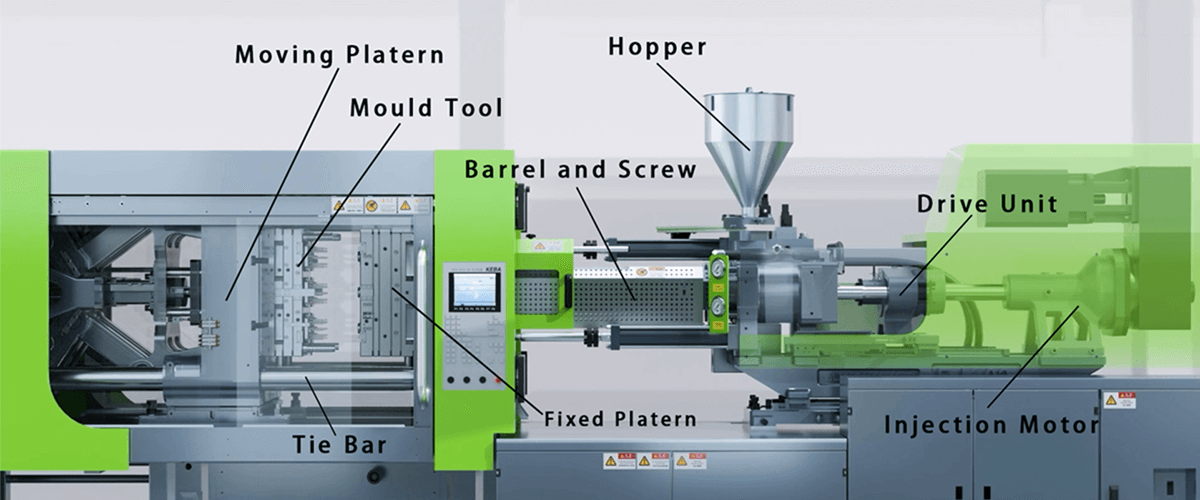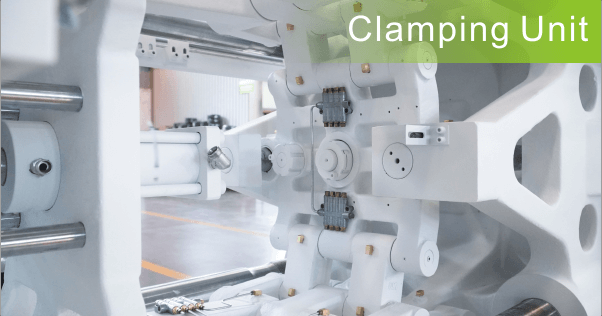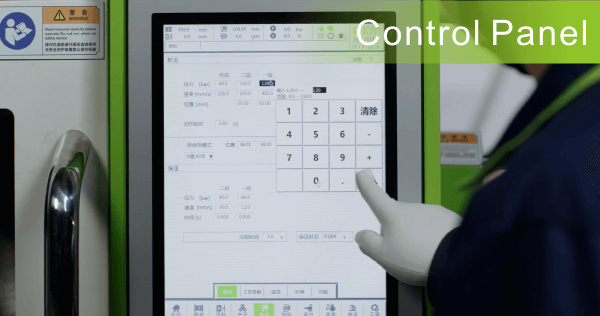

Imagine living in a world without the innumerable plastic things that provide convenience to our life, such as the durable containers, vibrant toys, and necessary daily products. Let me
introduce injection molding machines, the unsung heroes of the industrial industry. These devices transform ordinary plastic pellets into an amazing variety of commonplace objects, much like wizards in a workshop.
We're going to pull back the curtain and examine the intriguing world of injection molding machine parts in greater detail in this thorough investigation. These silent, yet incredibly productive machines shape and mould the plastic that goes into our everyday lives.
Injection Molding Machine Parts

· Injection Unit: This is where the magic begins. The injection unit is like a chef in the kitchen, responsible for melting and injecting the plastic material into the mold to cook up your desired product.
· Clamping Unit: Imagine holding a mold in place while the injection unit does its thing. That's the job of the clamping unit. It's the sturdy hands that keep everything in check during the plastic party.
· Hydraulic System: Think of this as the power bank. All the tasks that are performed in the injection machine are done by the hydraulic systems as it provides the energy. These tasks include clamping, ejecting, and injecting.
· Control Panel: Meet the brain of the operation. The control panel is where the settings are dialed in—temperature, pressure, time—it's all controlled here, making sure everything is just right.
· Drive System: This is the muscle behind the movement. The drive system powers the parts that need to move, like the injection screw, the mold's open-and-close dance, and the ejection process.
· Mold System: If the injection unit is the chef, the mold system is the mold itself. It shapes and defines the plastic, determining the final look and feel of the product.
· Ejector Unit: Picture a gentle push to release a finished product. The ejector unit is responsible for ensuring the molded product smoothly exits the mold.
Functions of Injection Molding Machine Parts
Think of the injection unit as the plastic melter. It consists of an injection screw, nozzle, and barrel. While the screw turns to melt the plastic, the nozzle helps to propel it into the mould. It resembles a plastic orchestra playing.

The clamping unit is also known as the mold’s protector. It helps in the tight closure of mold during the injection of plastic. We can also say that acting as a customized container for the material is the primary function of the clamping unit. In easier words, we can say that this injection molding part helps us as vigilant friends that nothing moves and thus the plastic gets the perfect shape and we can get a flawless end product.
The hydraulic system is the power system of the machine. For example, just like automobiles that need petrole to work, the same is the case with injection molding machines. This machine also needs liquid to make every part work properly and thus this hydraulic system is the component of injection molding machine that provides the required material. So, this gives the machine its special job, like holding the mold, plastic injection and releasing the final product. So like the super hero who keeps things running smoothly, the hydraulic system provides our machine with the energy it needs to create amazing plastic creations!

While cooking we control the temperature to get our desired food in the desired state. The same is the case with injection molding machine parts control panel. This part can control and provide multiple controlling parameters for the working of machine. The functions that this part performs include pressure, duration and operating temperature.
Thus, when we discuss the injection screw, we are referring to the component that stirs and transfers the molten plastic. Its motor system ensures that the plastic is well-mixed as it turns. The drive mechanism is also designed to ensure a smooth opening and shutting of the mould, similar to the action of a book. Additionally, the drive system facilitates the product's release once it is ready, much like a toaster does when it heats up your morning toast. Thus, the drive system might be compared to the muscles of the machine, ensuring that everything moves and functions as a cohesive unit to create our amazing plastic creations!
Similar to how you use a cookie cutter to create playdough into interesting shapes, this unique tool aids in shaping the melted plastic into the precise shape we desire. Thus, the mould system is like our best buddy when it comes to producing the things we want, like a toy soldier or a bottle cap! The mould selects the ideal shape from a box of mystical shapes to create all the amazing items we use on a daily basis out of melted plastic. Using the mould system, an incredible tool, to produce a variety of shapes is like having a superpower!
And last but not least, once the plastic has taken its form, the ejector unit is the polite usher, gently pushing the finished product out of the mold so it can make its debut.
Injection Molding Screw and Barrel Parts and Functions
Now let's focus on the dynamic pair: the injection molding screw and barrel. As the plastic melts, the barrel provides a cozy environment for the screw to carry it through. Their dependable sidekicks, the check ring, the nozzle, and the hopper, ensure that everything works properly.
Frequently Asked Questions on the Components and Operations of Injection Molding Machines
Q1: What are the potential problems with the injection unit?
A1: The screw and barrel may wear out, or the nozzle may become clogged. Frequent inspections and cleaning can stop these problems.
Q2: How come the clamping unit matters?
A2: During injection, the clamping unit makes sure the mould is tightly closed. It secures everything in the same way as a seatbelt.
Q3: What is wrong with the control panel system?
A3: Operators can adjust machine parameters via the control panel. It functions similarly to a remote control for flawless plastic performance.
Q4: What makes the hydraulic system necessary?
A4: The power for motion comes from the hydraulic system. The machine would be still as a statue without it.
Q5: What is the best way to maintain the barrel and injection screw?
A5: It's important to clean and inspect frequently. In the event that they begin to show wear, a fast repair or replacement keeps the show rolling.
Q6: Are there any safety precautions to follow when using an injection moulding machine?
A6: Absolutely! When operating a machine, ensure that you have had the required training, wear safety gear, and adhere to all instructions.
Conclusion
In conclusion, learning about the specifics of injection moulding machine components helps us appreciate the common plastic marvels that around us. Every component is essential to the harmonious development of plastic, guaranteeing that the goods we use are not only practical but also expertly made. Thus, keep in mind our reliable injection moulding machines—the unsung heroes operating in the background—the next time you crack open a bottle or play with a plastic toy.
